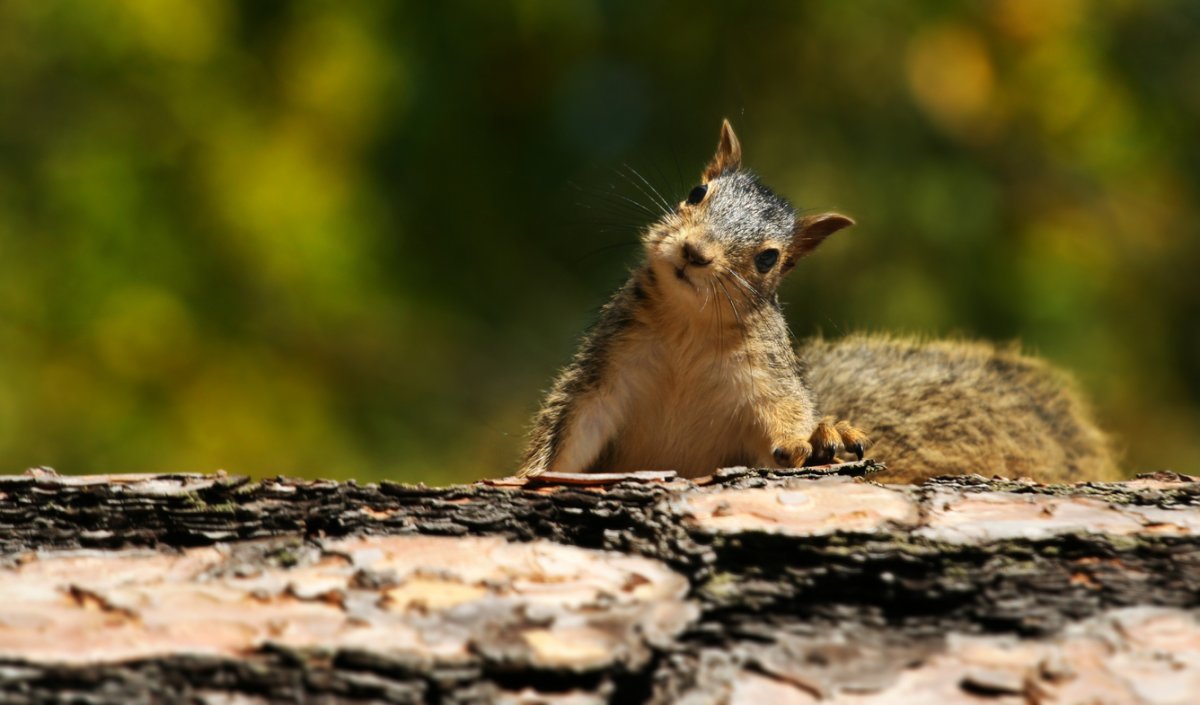

We may earn revenue from the products available on this page and participate in affiliate programs. Learn More ›
A squirrel is a squirrel, right? Think again. More than 65 different types of squirrels live in the United States. There are 24 types of ground squirrels, 22 species of chipmunks, and two types of flying squirrels, plus marmots, prairie dogs, and of course tree squirrels. If you have a backyard anywhere in America, chances are you have squirrels. They may nest in your attic, raid your bird feeder or tunnel near your foundation, but they also offer tons of entertainment with their high-energy antics. Following are seven types of squirrels from across the continent that everyone should get to know just a bit better.
Related: How To: Get Rid of Squirrels
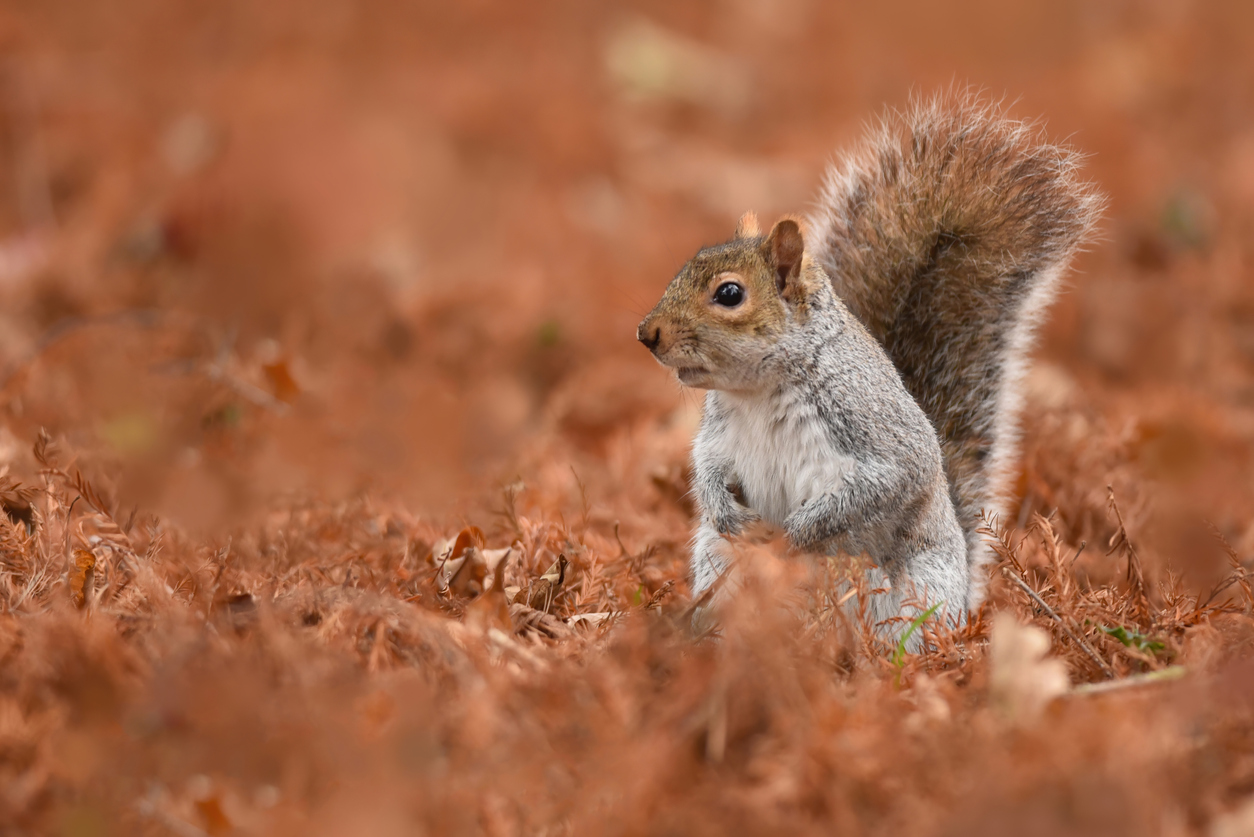
1. Eastern Gray Squirrel
Eastern gray squirrels have bushy tails and a blend of black, white, and brown fur that appears gray when viewed from a distance. Their undersides are normally white or light gray, and the flattened, bushy gray tail features silver-tipped hairs. Gray squirrels may also display variations from the typical color. Individuals can be white, black, or blond. They measure 16 to 20 inches in length, and weigh up to 1.5 pounds.
The eastern gray squirrel is one of the most common types of squirrels in Ohio, the Midwest and the rest of eastern North America. It’s also been introduced to parts of the West. They are found in mixed hardwood forests, as well as suburban and urban environments. Their preferred foods include seeds, nuts, and berries, but they can become omnivorous, feeding on insects, bird eggs and juveniles, as well as amphibians, when their favorite foods are scarce.
Key Characteristics: The eastern gray squirrel is one of the most common squirrels in North America. Coloration varies from white to black, but the typical coloration is gray above and lighter beneath. Overall length is 16 to 20 inches, and average weight is 1.5 pounds.
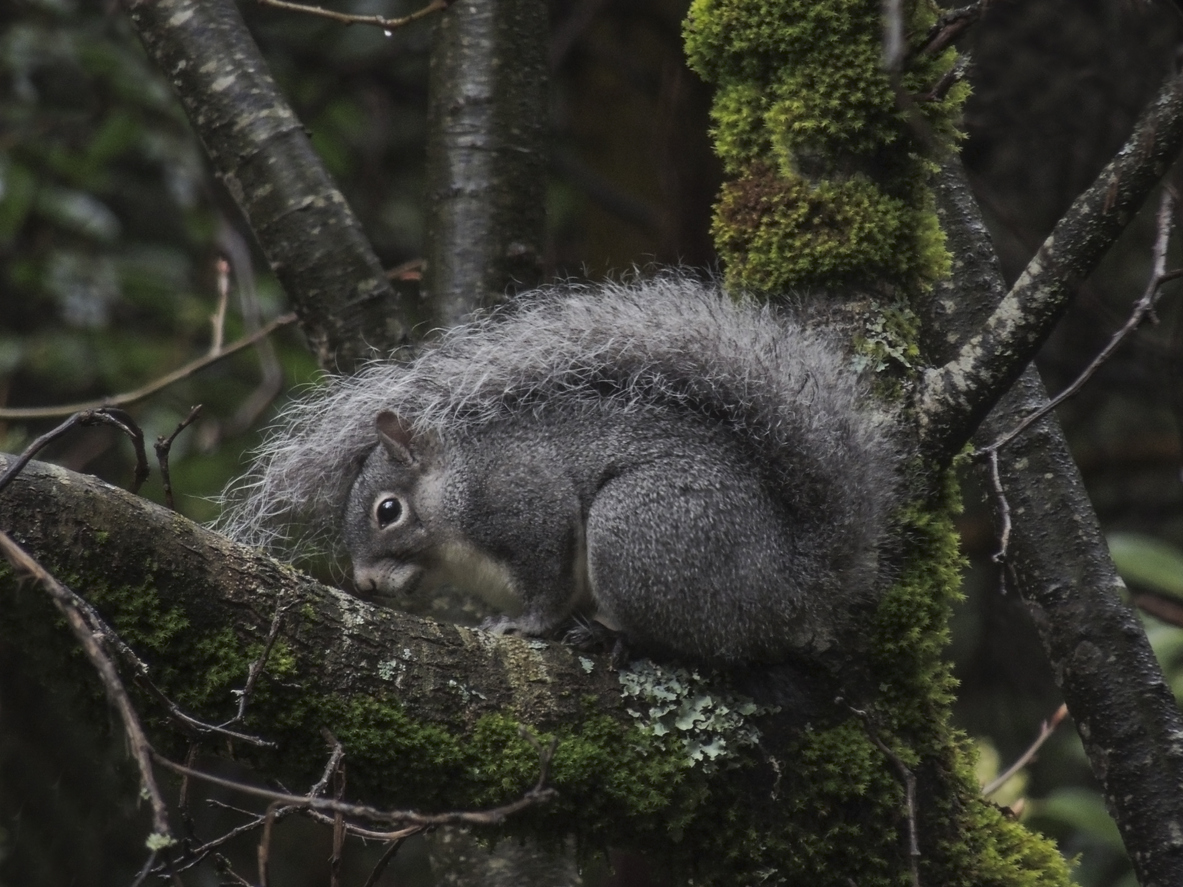
2. Western Gray Squirrel
In contrast to the ubiquitous eastern gray squirrel, the western gray squirrel’s range is limited to the Pacific Northwest. The two species can easily be mistaken for one another, but the western gray squirrel is differentiated by its steely gray coloration, slightly larger size, longer tail, and more prominent ears.
Western gray squirrels have an affinity for pine trees and oak trees. They may also be found in stands of Douglas fir where some oaks or pines are mixed in. A mature forest habitat with a well-established canopy and a diverse offering of vegetation is essential for western gray squirrels to thrive. They feed on seeds, nuts, tree buds, berries, fungi, leaves and twigs, as well as the occasional birds’ eggs and nestlings.
Key Characteristics: Western gray squirrels typically measure 18 to 24 inches long, and may weigh more than 2 pounds. They present an overall steely gray coloration with lighter fur on the undersides and a long, bushy, silvery-colored tail.
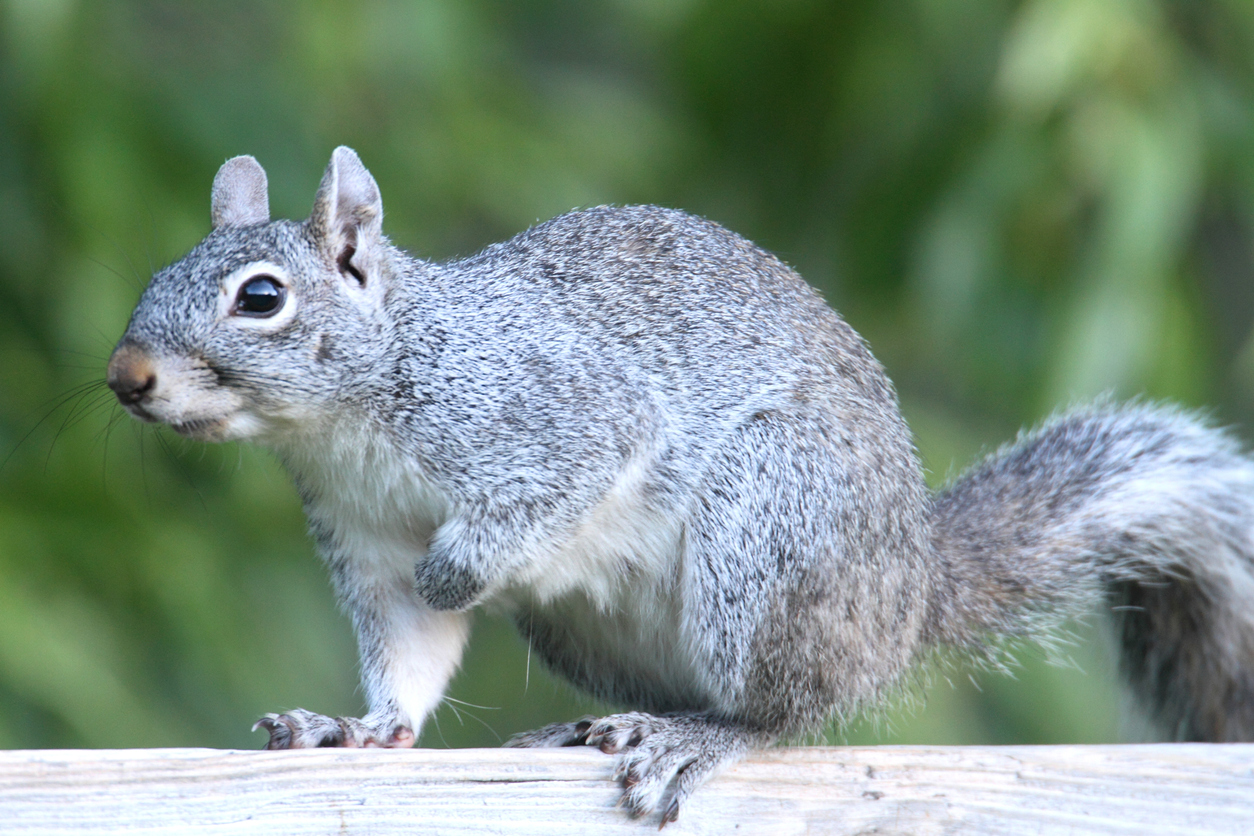
3. Arizona Gray Squirrel
The Arizona gray squirrel’s range is restricted to parts of Arizona and New Mexico, perhaps crossing into Mexico. This is another mostly gray colored squirrel with lighter underparts. It has tall, prominent ears without tufted tips, and a bushy gray tail highlighted with white-tipped hairs. The size is similar to that of eastern gray squirrels, but the Arizona gray squirrel is a bit leaner, averaging 1.25 pounds.
One of three types of squirrels in Arizona, the Arizona gray squirrel lives in remote canyon bottoms and mountain ranges, between 5,000 and 6,000 feet in elevation, among deciduous forest habitats. Some of its favorite trees are walnuts, oaks, and pines, especially near a reliable source of water. It also feeds on juniper berries, fungi, and a variety of seeds and small fruits.
Key Characteristics: Arizona gray squirrels are recognized by their long, tuftless ears, gray fur, white- to cream-colored bellies, and bushy gray tails with white highlights. They measure 16 to 20 inches long, and weigh about 1.25 pounds.
Related: Solved! How to Keep Squirrels Away from Bird Feeders
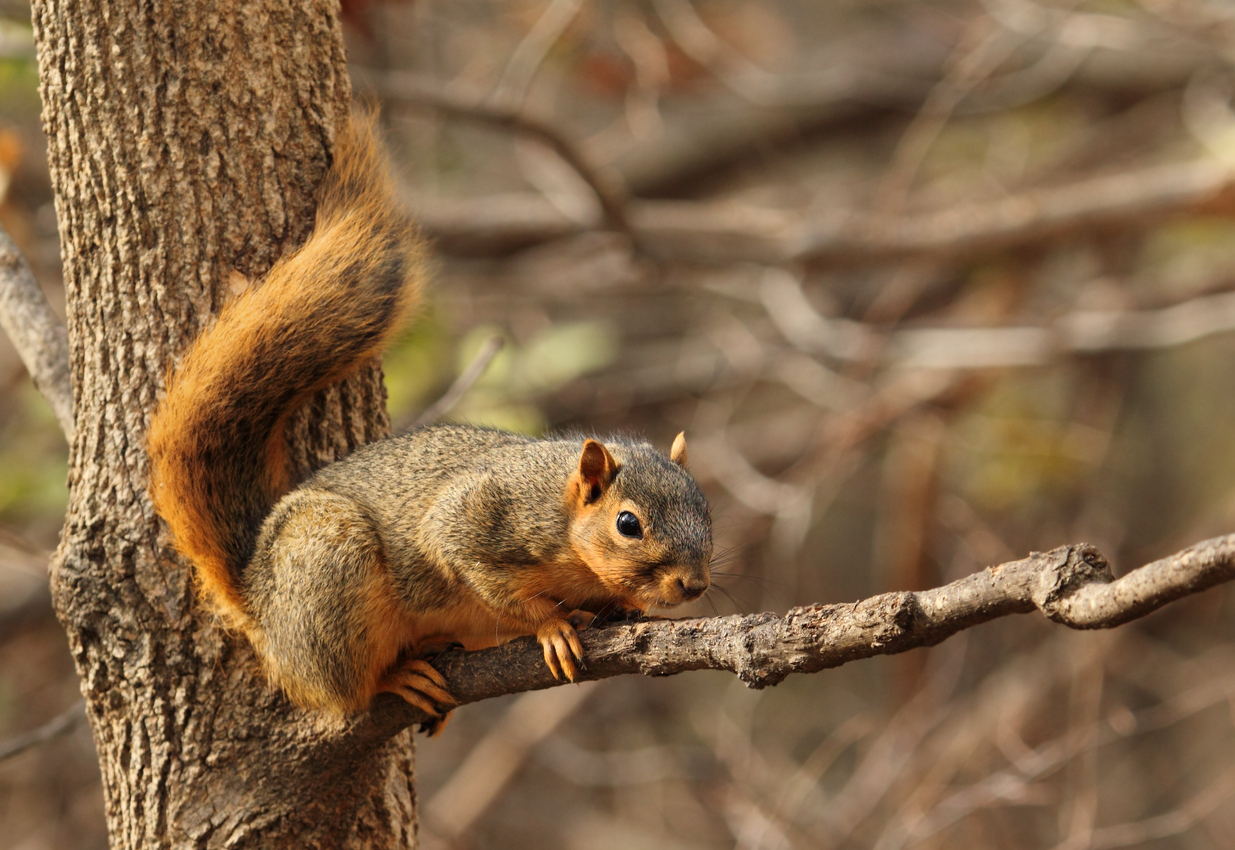
4. Eastern Fox Squirrel
Besides gray squirrels, the eastern fox squirrel is North America’s other (and larger) common tree squirrel. It is one of three different types of squirrels in Florida, one of four types of squirrels in Indiana, and it covers a vast area from southern Canada to northern Mexico. Its fur is gray and black on top, orangish on the belly, and cinnamon mixed with black on the tail. This large species measures 19 to 29 inches long and weighs 1.5 to 3 pounds or more.
Fox squirrels like to make their homes in upland hardwood forests that have nut-producing trees, and they have a strong ability to adapt. They also have a fondness for agricultural crops like corn and pecans.
Key Characteristics: Eastern fox squirrels are recognized by their large size and “foxy” coloration that is gray mixed with an overall orange or reddish tint. They measure 19 to 29 inches from nose to tail, and weigh up to 3 pounds.

5. American Red Squirrel
At a glance the American red squirrel, also called the pine squirrel, is somewhat similar in coloration to fox squirrels. Its upper parts are a rich chestnut or rusty reddish gray color, but its belly is white. Around its eyes is a noticeable white eye ring, and its tail is bushy with a touch of white. Some red squirrels also have a black stripe along each side. The American red squirrel, however, is much smaller than the fox squirrel, at only 10 to 15 inches long and weighing about a half pound.
This more northerly squirrel species is one of four types of squirrels in Michigan. It is found in conifer forests and mixed woods throughout the northern and western United States and Canada, in the Rocky Mountains, and in the Appalachians as far south as northern Georgia. Red squirrels prefer to feed on seeds and cones of evergreen trees, but like other squirrels, they become more omnivorous at times.
Key Characteristics: The American red squirrel is small, with red fur above and a white belly. It measures 10 to 15 inches long, and weighs around a half pound.
Related: Here’s Exactly What to Do About Squirrels in the Attic: DIY Methods and When to Call a Pro
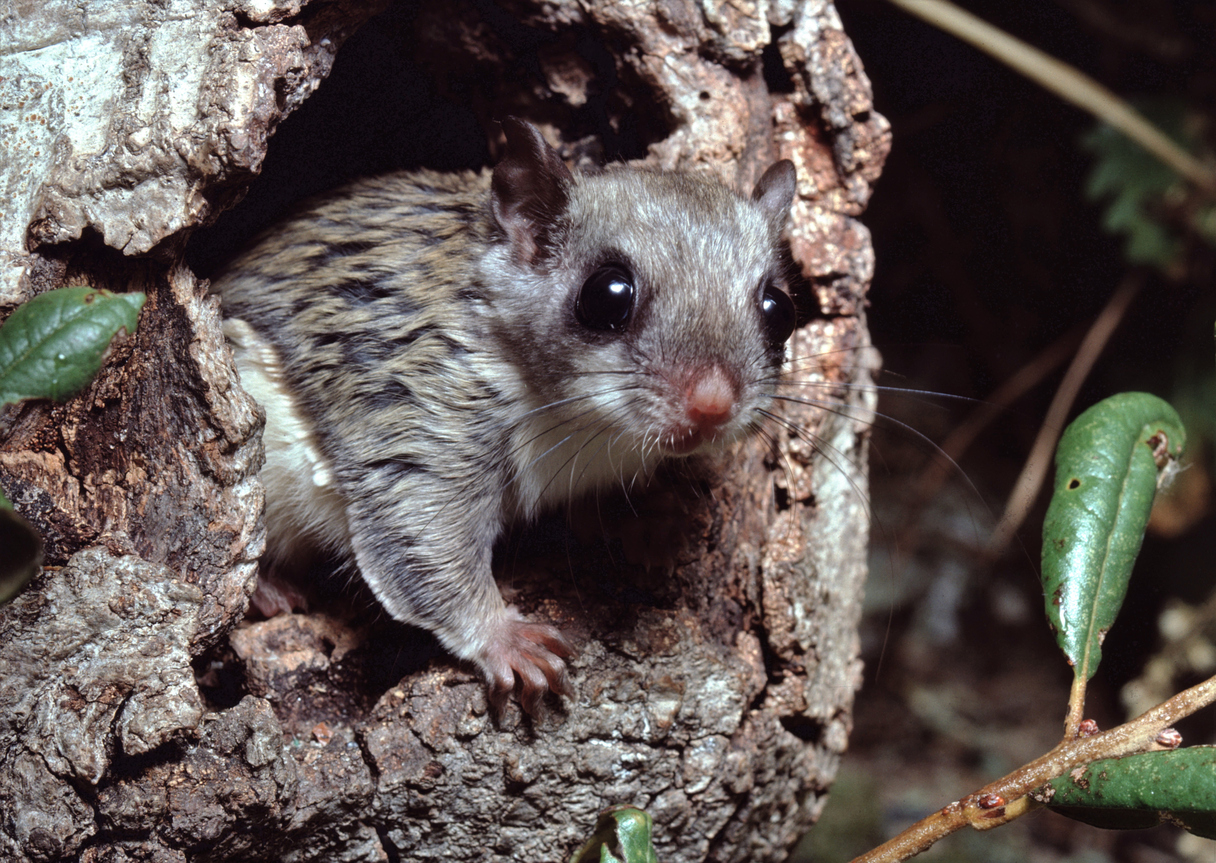
6. Southern Flying Squirrel
Flying squirrels are unique in two ways. The first being that they “fly.” More accurately, they stretch out their fore and rear legs to tighten the loose fold of skin connecting the extremities so that they can glide from branch to branch or tree top to ground. Also, unlike most squirrels, they are nocturnal. The southern flying squirrel is about the size of a chipmunk, at 7 to 10 inches long. It has dense, silky grayish brown fur on top and white fur on its belly. Its eyes are extra large and its tail is long and flat, making it an excellent rudder.
The southern flying squirrel ranges throughout eastern North America, from southern Canada to south Texas, on to Mexico and into Central America. It is one of just three types of squirrels in Texas. This small mammal is at home in either deciduous or mixed forests with plenty of old trees that have cavities for nesting. Seed-bearing hardwoods like hickory, maple, beech, and poplar are their favorites. In addition to nuts, they regularly eat berries, seeds, fruit, lichen, tree bark, and buds. In a pinch they also eat insects, nesting birds, and eggs.
Key Characteristics: Southern flying squirrels have giant black eyes, dense, silky gray fur, and a long, flat tail. They are rarely seen during daylight hours.
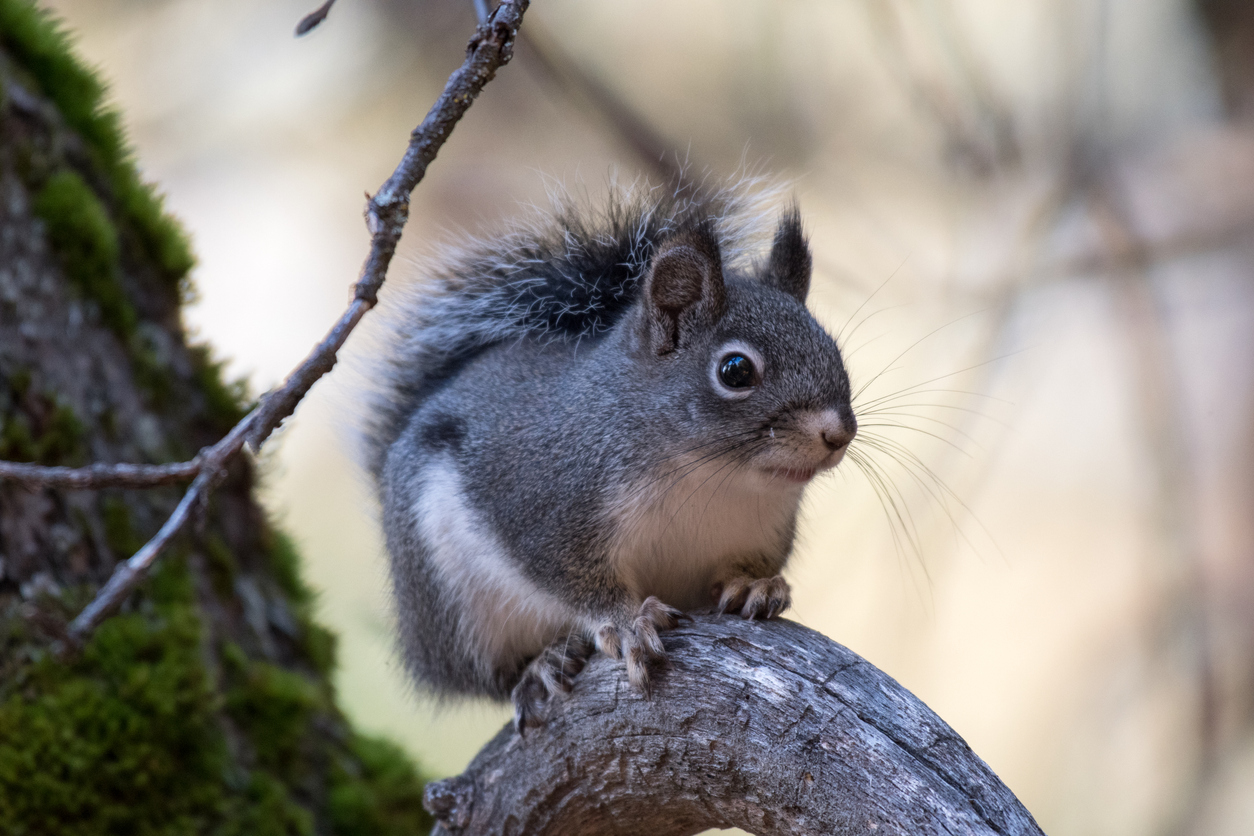
7. Douglas Squirrel
The Douglas squirrel, also known as chickaree or pine squirrel, is a cousin of the American red squirrel, and the two share overlapping territory in northern reaches of the Pacific Northwest. Although they are nearly identical in size, the Douglas squirrel is easily differentiated by its dark-brownish/gray upper parts and red belly. Its native homeland runs from northern California, western Oregon and Washington, to southwestern British Columbia.
The Douglas squirrel takes full advantage of its restricted range, happily taking up residence in stands of pine, fir, spruce, and hemlock from sea level to subalpine altitudes. Their preferred foods include conifer seeds and fungi, along with berries, seeds, flowers, and leaf buds. As with other squirrels, the diminutive Douglas squirrel will raid bird nests to supplement its diet.
Key Characteristics: Douglas squirrels are recognized by their dark brownish gray back, tawny orange belly, and white eye ring. They can grow to 14 inches long and weigh up to two-thirds of a pound.
Related: How to Get Rid of Chipmunks
